SCHIZOPHRENIA AS A DISEASE OF THE
SYNAPSE
Karoly Mirnics, Frank A. Middleton,
David A. Lewis, Pat Levitt
University of Pittsburgh
Recently, using cDNA microarrays, we
uncovered an altered gene expression patterns between individuals with
schizophrenia and matched controls. Functional data mining led to two
novel discoveries: a consistent decrease in the group of transcripts encoding
proteins that regulate presynaptic function; and the most changed gene, which
has never been previously associated with schizophrenia, regulator of G protein
signaling 4. From these and other findings, a hypothesis has been
formulated to suggest that schizophrenia is a disease of the synapse. in
the context of a neurodevelopmental model, it is proposed that impaired
mechanics of synaptic transmission in specific neural circuits during childhood
and adolescence ultimately results in altered synapse formation or pruning, or
both, which manifest in the clinical onset of the disease. Preliminary
results indicate that some of the observed expression changes may be due to
inherited specifications in the gene sequences. In the follow-up studies,
we have also implicated several novel genes and pathways that reported
consistent expression changes in the prefrontal cortex of subjects with
schizophrenia.
Slides:
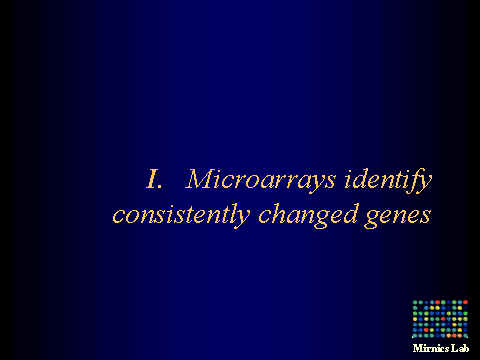 |
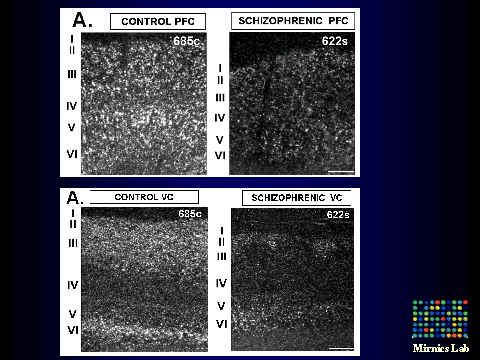 |
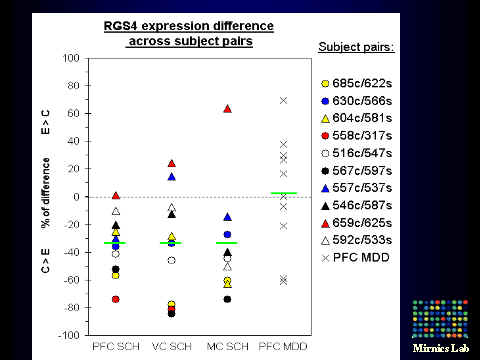 |
 |
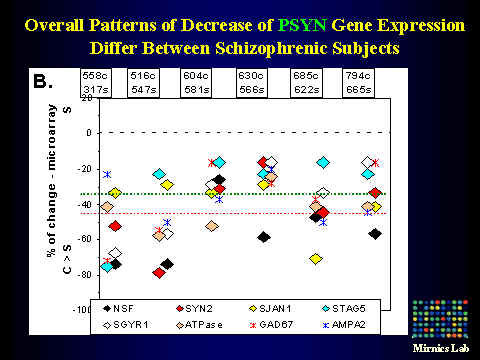 |
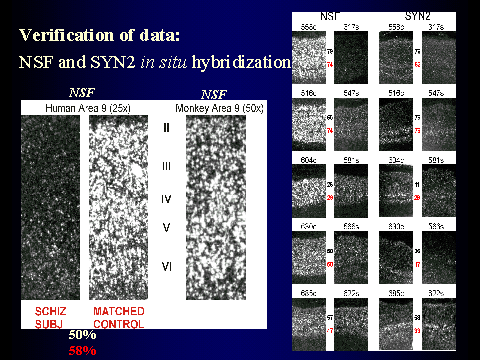 |
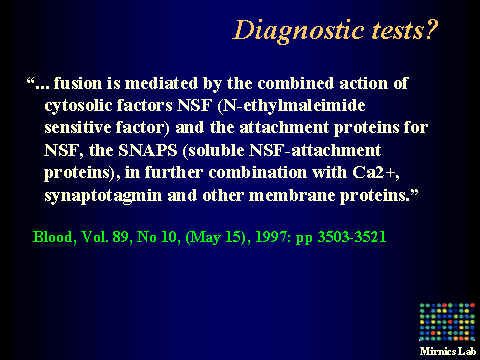 |
 |
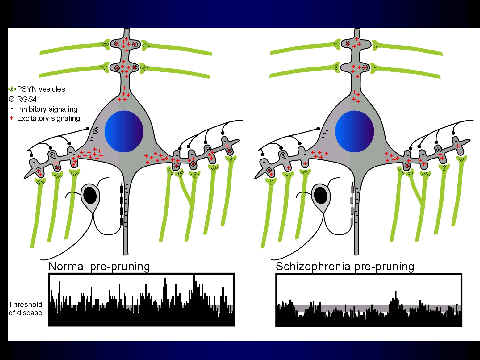 |
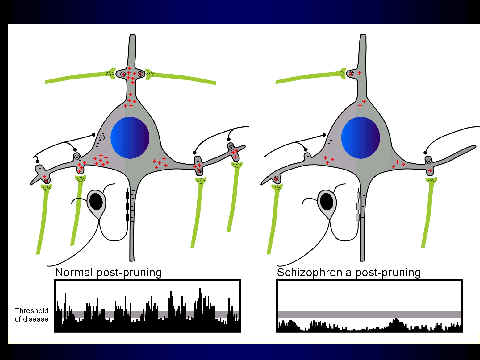 |
 |
 |
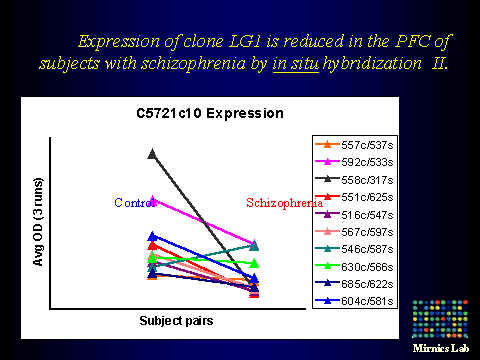 |
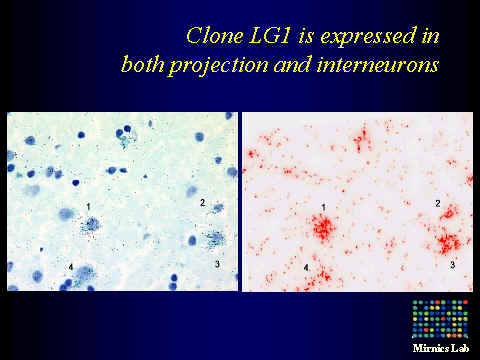 |
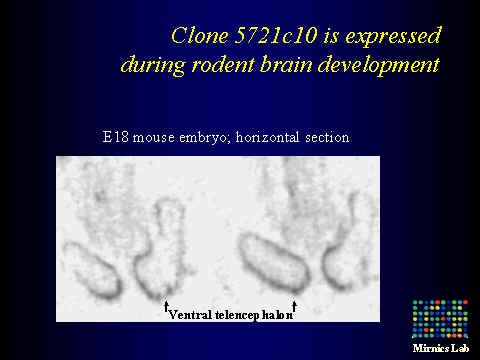 |
